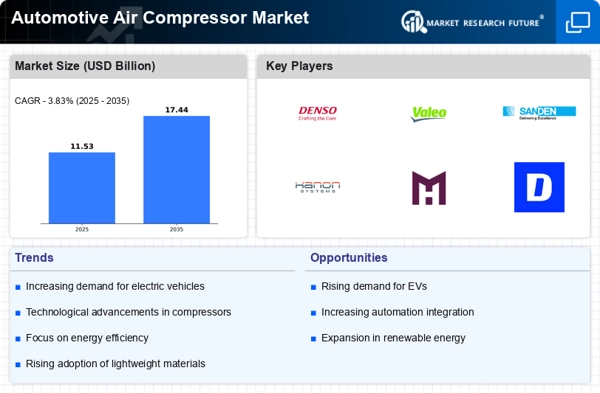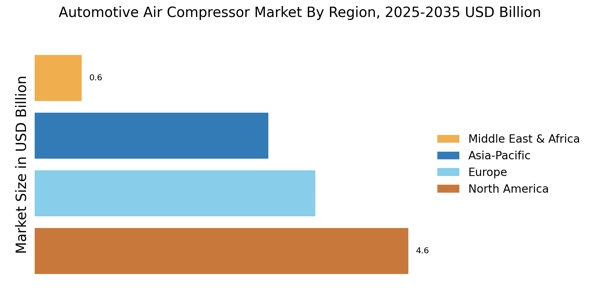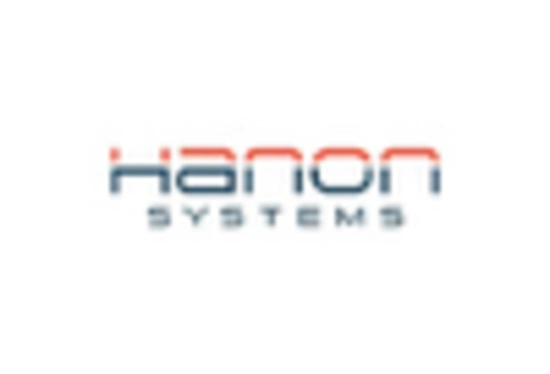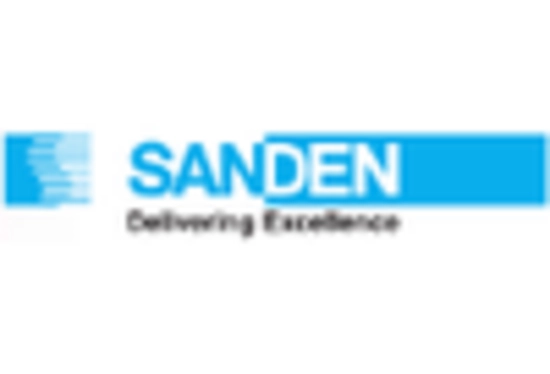Rising Demand for Fuel Efficiency
The Automotive Air Compressor Market experiences a notable surge in demand for fuel-efficient vehicles. As consumers increasingly prioritize fuel economy, manufacturers are compelled to innovate and enhance their vehicle designs. Air compressors play a crucial role in optimizing engine performance and reducing fuel consumption. According to recent data, vehicles equipped with advanced air compressor systems can achieve up to 15% better fuel efficiency compared to traditional models. This trend is likely to drive the Automotive Air Compressor Market as automakers seek to meet regulatory standards and consumer expectations for lower emissions and improved mileage.
Increasing Vehicle Production Rates
The Automotive Air Compressor Market is directly impacted by the increasing production rates of vehicles worldwide. As automotive manufacturers ramp up production to meet consumer demand, the need for efficient air compressor systems becomes more pronounced. Recent data suggests that global vehicle production is expected to reach over 100 million units annually by 2026. This surge in production creates a corresponding demand for air compressors, which are integral to various vehicle systems. Consequently, the Automotive Air Compressor Market is likely to experience substantial growth as manufacturers seek reliable and efficient compressor solutions to support their production goals.
Growth in Electric Vehicle Production
The Automotive Air Compressor Market is poised for growth due to the rising production of electric vehicles (EVs). As the automotive sector shifts towards electrification, the demand for air compressors that support EV systems is increasing. These compressors are essential for various functions, including climate control and battery cooling. Recent statistics indicate that the EV market is projected to grow at a compound annual growth rate of over 20% in the coming years. This growth is likely to create new opportunities for the Automotive Air Compressor Market, as manufacturers adapt their products to cater to the unique requirements of electric vehicles.
Regulatory Pressure for Emission Reductions
Regulatory pressure for emission reductions is a significant driver for the Automotive Air Compressor Market. Governments worldwide are implementing stringent regulations aimed at reducing greenhouse gas emissions from vehicles. This regulatory landscape compels manufacturers to adopt advanced technologies, including efficient air compressor systems, to comply with emission standards. The Automotive Air Compressor Market is likely to see increased demand for compressors that contribute to lower emissions and improved fuel efficiency. As automakers strive to meet these regulations, the integration of innovative air compressor technologies will become essential in their vehicle designs.
Technological Advancements in Air Compressor Design
Technological advancements are significantly influencing the Automotive Air Compressor Market. Innovations in compressor design, such as the development of variable displacement compressors, enhance efficiency and performance. These advancements allow for better integration with modern engine systems, leading to improved overall vehicle performance. Furthermore, the introduction of lightweight materials and compact designs contributes to the growing appeal of these compressors. As manufacturers continue to invest in research and development, the Automotive Air Compressor Market is expected to benefit from enhanced product offerings that meet the evolving needs of consumers and regulatory standards.


















Leave a Comment